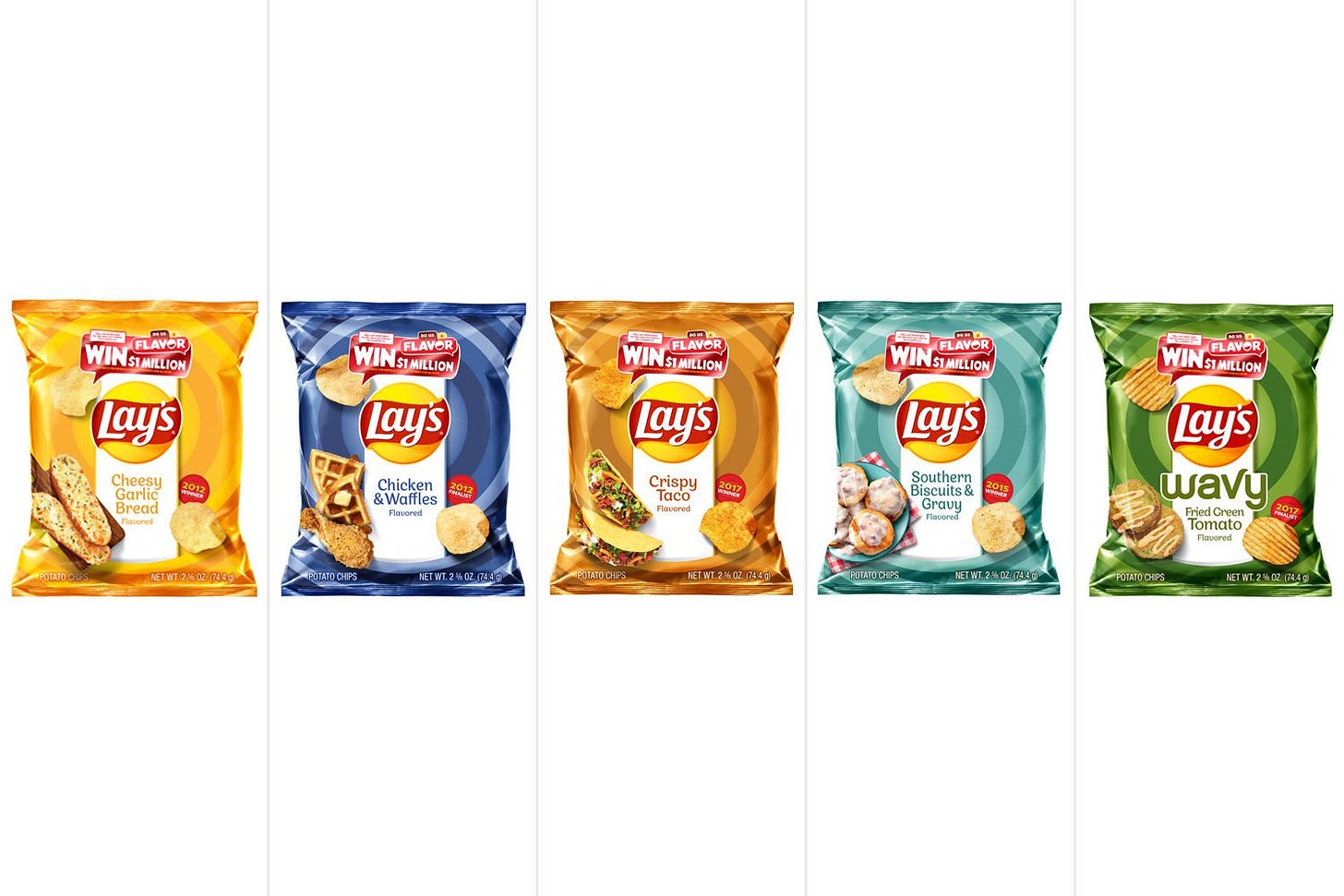Issue #76: Less AI = More Luxury?
Why human-made & consumer-created products are becoming key brand differentiators.
Welcome back to Brand Baby. I took last week off but I’m happy to be back. Today we’re talking about:
How brands are leaning into human-made products and designs as a response to AI.
Why handmade products will increasingly become a signal of cultural capital and luxury.
Why consumer-created products and designs can be a valuable tactic for brands.
The Anti-AI Design Movement
Earlier this week, I came across DIELINE’s recent piece: ‘Is the Anti-AI Design Movement Here?’ The piece unpacks brands that are embracing ‘consumer-driven creativity’ in packaging and brand design as a strategic response to our increasingly AI-saturated world.
By this point, we’ve all heard the rhetoric around how AI makes it easier than ever to produce generic, mass-market goods, so human-created and human-designed products will only become more valuable. I think luxury brands will particularly lean into authentic, handmade products and designs as a response to an abundance of AI slop among consumer goods. I wrote about this in my 2025 predictions piece back in January, saying:
I expect that the over-saturation of products due to AI and fast fashion (which go hand-in-hand), will result in an inclination towards products that are handmade, local, sustainable, and high-quality – specifically in fashion but also in homeware, art, etc.
Some people will be more willing to pay a premium for high-quality, well-designed products, not only because they’re better and last longer, but also because they’ll become a form of cultural capital and a way to signify taste in an increasingly oversaturated, commoditized world.
Less AI = More Luxury?
Particularly for high-end and luxury consumer brands, I think the production of handmade goods is a prime opportunity to differentiate in the market. The less AI involved, the more premium the brand and products. And handmade products won’t just differentiate brands, they'll also help bolster brands’ cultural capital, signaling taste and originality.
It’s my prediction that this phenomenon will even extend into other areas of life beyond consumer goods. Like with higher education, where traditional college experiences are becoming luxury experiences that emphasize human-centered learning and critical thinking. While the price tag on college has already made it a luxury experience, the contrast with AI-driven online learning platforms will likely make in-person, professor-led, residential education experiences even more premium. We’re also seeing this pattern at work, where "human-created" is becoming a valuable differentiator. I’ve seen a few creative agencies pop up on my LinkedIn feed that position their companies as ‘human-first,’ and I’m always curious about their traction and client base.
Consumer-Created Products
But back to the anti-AI design movement. There’s another strategy here that goes beyond just eliminating AI from production processes – it’s investing in consumer-created products. This approach involves (human) audiences in brand and product design and creation, which ultimately drives deeper brand connections and customer loyalty.
As DIELINE notes, there’s a key opportunity for brands to actually include consumers in the production and design process. Take Fishwife’s Summertime Art Box, for instance. The tinned fish brand launched limited-edition ‘color-me-in’ tins for consumers to bring their own ‘Fishwife masterpiece to life.’ The product successfully signals Fishwife’s values of creativity and playfulness, while also providing consumers with an engaging, interactive activity and an ensuing social media contest. And when audiences interact with a brand in a unique way like this, they’ll feel connected to the brand, ultimately driving consumer loyalty.
Products that are consumer-created or offer an element of interactivity sort of remind me of those strange product flavor and naming contests that seemed to be everywhere in the early 2010s. Remember when Lays would ask audiences to submit ideas for new flavors of chips, like ‘jalapeño and bacon’? (In case you were wondering if Lays is still doing this like I was, yes, yes they are.)
But you know what? Lays is onto something here. They’re giving audiences a real opportunity to be included in product creation and brand identity while also differentiating from AI-driven brands and products. I anticipate that other design-forward CPG brands will continue to introduce and evolve consumer-created, interactive opportunities – perhaps as a way to differentiate, perhaps as a way to signal AI opposition, or perhaps in an attempt to build brand loyalty (or all of the above).
I’m curious to see how consumer co-creation will continue and how brands will partner with their audiences in authentic, meaningful ways. Let me know if you’ve been seeing other consumer-created moments from brands! As always, thank you for reading. xx







lovee the fishwife summer coloring campaign, i thought it was really well done!!